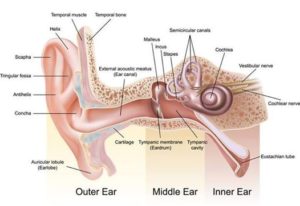
Box Turtles
The eastern box turtle has a high-domed, rounded, hard upper shell, the carapace. Orange and yellow markings on the dark brown shell distinguish it from other box turtles, and also the four toes on its hind feet. Its coloring camouflages it among leaves and debris on the floor of moist forests.
The underside of the shell, the plastron, is dark brown and hinged. All box turtles have a bilobed plastron, allowing them to close their shell. Its shell is unique because it can regenerate. In one report, the carapace of a badly burned box turtle completely regenerated.
Box turtles have a hooked upper jaw, and usually a significant overbite. Feet are slightly webbed. Males are larger with shorter, thicker tails than females. Males have short, thick, curved hind claws, while females’ hind claws are long, straight and thin.
Eastern box turtles walk with their heads upright. They can travel about 50 -55 yards in one day. A homing instinct helps this turtle find its way home. They typically grow to 4 inches by 6 inches. The largest box turtle is the Gulf Coast box turtle found along the northern region of the Gulf of Mexico.
The subspecies Terrapene c. carolina, commonly referred to as the eastern box turtle, is found along the eastern United States from Maine to Florida, and west to the Great Lakes region and Texas.
Eastern box turtles are predominantly terrestrial and live in a variety of vegetative areas. They are often found near streams or ponds, or areas of heavy rainfall.
Box turtles are omnivores. Younger box turtles grow rapidly and tend to be preferentially carnivorous. Therefore, they spend more time in the water where it is easier to hunt. After five to six years, they move onto the land and shift to a more herbivorous diet. At the Smithsonian’s National Zoo, eastern box turtles eat salad, earthworms, pellets and occasionally mealworms.
These turtles usually have a home range with a diameter of 750 feet or less in which they normally stay. Home ranges of different individuals overlap frequently regardless of age or sex. Aggression between individuals is not common, competing males will spar each other. This involves biting at each other’s shells.
Box turtles reach sexual maturity around the age of 5. Mating season generally starts in the spring and continues through fall. After a rainfall, males become especially active in their search for a female. Males may mate with more than one female or the same female several times. Females can store sperm for up to four years and do not mate every year. In fact, a female could lay fertile eggs up to four years after a successful mating!
Nesting season is May to June. Females usually lay four or five eggs. The female uses her hind legs to dig a nest in sandy soil. She then covers the eggs, which incubate and hatch on their own. Box turtles exhibit temperature dependent sex determination; eggs incubated at 70-80 degrees Fahrenheit are more likely to be males, and those incubated above 82 degrees Fahrenheit are more likely to be females.
Eastern box turtles adjust their activity in order to maintain their optimal body temperature. In the summer, they are most active early in the morning or after it rains. When it gets too hot, they find cool areas to rest, such as under logs, leaf piles, mud or abandoned mammal burrows. During the spring and fall, they are active throughout the day and enjoy lying in the sun to get warm.
Eastern box turtles that live in southern regions remain active throughout the winter. In northern regions where it is too cold, they find a place where they can be insulated, a hibernaculum, and become lethargic, entering a hibernation-like state called brumation. This starts in October or November and ends in April when they emerge again.
Box turtles usually live for 25-35 years but have been known to survive to over 100 years old!

The eastern box turtle has a high-domed, rounded, hard upper shell, the carapace. Orange and yellow markings on the dark brown shell distinguish it from other box turtles, and also the four toes on its hind feet. Its coloring camouflages it among leaves and debris on the floor of moist forests.
The underside of the shell, the plastron, is dark brown and hinged. All box turtles have a bilobed plastron, allowing them to close their shell. Its shell is unique because it can regenerate. In one report, the carapace of a badly burned box turtle completely regenerated.
Box turtles have a hooked upper jaw, and usually a significant overbite. Feet are slightly webbed. Males are larger with shorter, thicker tails than females. Males have short, thick, curved hind claws, while females’ hind claws are long, straight and thin.
Eastern box turtles walk with their heads upright. They can travel about 50 -55 yards in one day. A homing instinct helps this turtle find its way home. They typically grow to 4 inches by 6 inches. The largest box turtle is the Gulf Coast box turtle found along the northern region of the Gulf of Mexico.
The subspecies Terrapene c. carolina, commonly referred to as the eastern box turtle, is found along the eastern United States from Maine to Florida, and west to the Great Lakes region and Texas.
Eastern box turtles are predominantly terrestrial and live in a variety of vegetative areas. They are often found near streams or ponds, or areas of heavy rainfall.
Box turtles are omnivores. Younger box turtles grow rapidly and tend to be preferentially carnivorous. Therefore, they spend more time in the water where it is easier to hunt. After five to six years, they move onto the land and shift to a more herbivorous diet. At the Smithsonian’s National Zoo, eastern box turtles eat salad, earthworms, pellets and occasionally mealworms.
These turtles usually have a home range with a diameter of 750 feet or less in which they normally stay. Home ranges of different individuals overlap frequently regardless of age or sex. Aggression between individuals is not common, competing males will spar each other. This involves biting at each other’s shells.
Box turtles reach sexual maturity around the age of 5. Mating season generally starts in the spring and continues through fall. After a rainfall, males become especially active in their search for a female. Males may mate with more than one female or the same female several times. Females can store sperm for up to four years and do not mate every year. In fact, a female could lay fertile eggs up to four years after a successful mating!
Nesting season is May to June. Females usually lay four or five eggs. The female uses her hind legs to dig a nest in sandy soil. She then covers the eggs, which incubate and hatch on their own. Box turtles exhibit temperature dependent sex determination; eggs incubated at 70-80 degrees Fahrenheit are more likely to be males, and those incubated above 82 degrees Fahrenheit are more likely to be females.
Eastern box turtles adjust their activity in order to maintain their optimal body temperature. In the summer, they are most active early in the morning or after it rains. When it gets too hot, they find cool areas to rest, such as under logs, leaf piles, mud or abandoned mammal burrows. During the spring and fall, they are active throughout the day and enjoy lying in the sun to get warm.
Eastern box turtles that live in southern regions remain active throughout the winter. In northern regions where it is too cold, they find a place where they can be insulated, a hibernaculum, and become lethargic, entering a hibernation-like state called brumation. This starts in October or November and ends in April when they emerge again.
Box turtles usually live for 25-35 years but have been known to survive to over 100 years old!


 BATS
BATS



 There are 4 kinds of teeth:
There are 4 kinds of teeth:




















